The old Sonos One was a versatile speaker at an entry price that didn't quite match the HomePod. The new Era 100 speaker changes that with a more dynamic sound and robust features — while managing to undercut HomePod in price.
Before the Era 100, Sonos' extensive speaker lineup and Apple's minimal one didn't overlap much, if at all. HomePod mini costs $100, and HomePod sits at $300.
Sonos' line started around $200 and mostly skipped the $300 price point. Although the Era 100 now raises the base price of a Sonos speaker to $250, it also directly challenges Apple's HomePod for the first time.
The design of Era 100
We spent multiple days at Sonos HQ in early February listening to product designers tell us about every detail of the Era 100 (and Era 300).
We learned that the goal of the Era 100 was simply to take the One and make it better without changing its footprint.
From kitchens to bathrooms to bookshelves, the Era 100 should be able to slot in wherever a Sonos One used to sit but sound better — that was the objective.
So ultimately, the Era 100 still feels like a One speaker. The key visual difference is that the Era 100 is taller than the previous model. For direct comparison, Era 100 measures about half an inch taller than the new HomePod.
We thought the Era 100 was an attractive, modern-looking speaker in our home, but it didn't make any bold design choices like the Era 300. Instead, it was an inconspicuous product that blended into our decor effortlessly.
The Era 100 does come packed with features. It supports Wi-Fi a/b/g/n/ac/ax/6 and has Bluetooth 5.0 for wireless streaming.
While Bluetooth may be less used than Wi-Fi for streaming music, the speaker could be brought to a friend's house or used easily somewhere out of Wi-Fi range.
There's also a USB-C port in the back for a line-in and ethernet accessory from Sonos. You could connect a turntable or other device without much effort.
We used the line-in accessory with an Audio Technica turntable, which worked beautifully. Previously, you would need a Sonos Port or Five speaker for easy turntable compatibility, but the bar is now lower for wired and wireless usage.
A new volume trough on the speaker's top is intended to simplify volume adjustment for guests or owners. It worked for us to tap or slide our finger across.
A microphone array on the speaker is for a voice assistant but can also be used for Trueplay quick tuning. This quick tuning will make the speaker sound its best in any location. Finally, on the back is a switch to completely disconnect the microphones for privacy.
Listening to Era 100 vs. HomePod
On their own, the Era 100 and HomePod each sounded great. Directly compared to each other, HomePod was less impressive. The two speakers did sound different than each other, however.
Era 100 commanded a deep resounding bass resonance, but not quite in the same way the HomePod did.
The HomePod's bass could be described as looser and more ambient, while Era 100 tended to be tighter and slightly more constrained.
Part of this is the internal driver direction and configuration. HomePod is also capable of Dolby Atmos music playback, whereas Era 100 is not.
We went back and forth, listening to hundreds of songs on both speakers over multiple weeks. We used Apple Music, Spotify, and Amazon Music as audio sources.
We listened to all genres of music, including film scores. In the end, we came to the impression that the Era 100, which boasts three drivers — two tweeters and a midwoofer — sounded better. It had more volume and a generally cleaner and fuller sound.
The mid-range was more pronounced and produced a vibrant sound. Modern pop songs like "Don't Start Now" by Dua Lipa and "Blinding Lights" by The Weeknd still had depth, but vocals certainly popped.
We tended to keep the EQ flat on Era 100, but it did have adjustments for bass and treble. Reducing the loudness was also more subtle than that setting on HomePod, for better or worse.
Era 100 as a stereo pair
Much like two HomePods sounded substantially better than a single one, two Era 100 speakers in a stereo pair sounded much better than a single one.
Two Era 100 speakers paired together offered a very compelling listening solution — much bigger and more dramatic than they looked.
If you're not interested in spatial audio — a format that shouldn't be immediately dismissed — then two Era 100 speakers are a wonderful music-listening station.
We tried streaming music over Bluetooth to a pair of Era 100 speakers. To do it, we only needed to connect to one, with a press of the Bluetooth button on the back, and it automatically handled everything else.
The only place two Era 100 speakers don't match the HomePod is their ability to be used as front home theater speakers. It would be nice if Sonos enabled that functionality somehow, but they haven't yet.
We like the idea of Era 100 as a foundational building block for music in the home.
A single one is compact. Two are an elevated listening experience. And if you do want to invest in Sonos as a home theater system, two Era 100s can be used as rear surround sound later.
Should you buy an Era 100 or HomePod?
Unequivocally, the Era 100 is the wireless home speaker to beat. It incorporates tremendous sound quality, abundant features, and a reasonable price into a compact product.
This Sonos speaker should place tremendous pressure on HomePod. Era 100 generally sounded better and offered more features — including longevity through a line-in connection.
It's not cheap at $250, but we're convinced it delivers plenty of value for that price point.
For people interested in making the experience even better, two Era 100s might be close to the best, most versatile music setup without going above $500.
They can be used as a stereo pair with Wi-Fi, Bluetooth, line-in, or transitioned to rear home theater speakers at some point in the future.
Era 100 certainly is a new era for Sonos and a surprisingly competitive one against Apple and its HomePod.
Sonos Era 100 - Pros
- Excellent sound quality
- Support for Wi-Fi, Bluetooth, AirPlay, and 3.5mm input
- Can be used for music or as part of surround sound system
Sonos Era 100 - Cons
- Taller and more expensive than previous One speaker
- Line-in and ethernet require an adapter at an additional cost
Rating: 4.5 out of 5
This speaker is available for purchase at Sonos or Best Buy for $249.
 Tyler Hayes
Tyler Hayes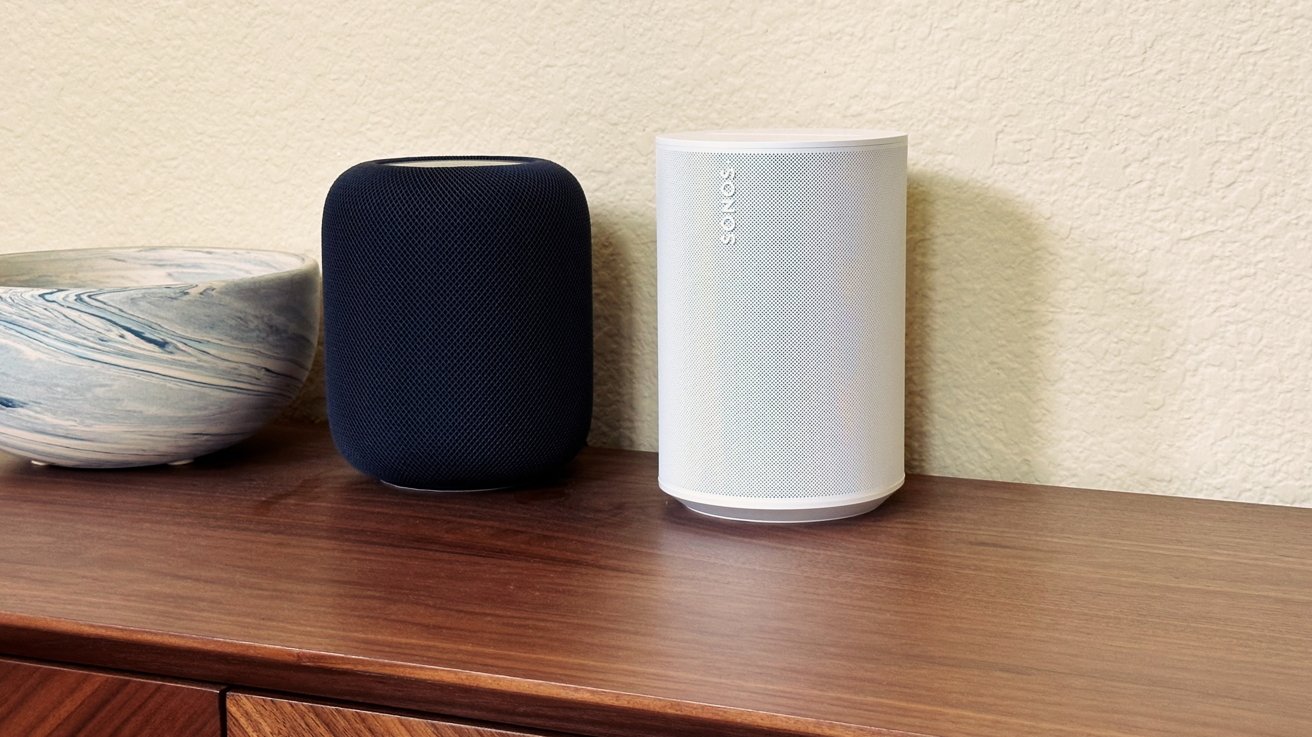
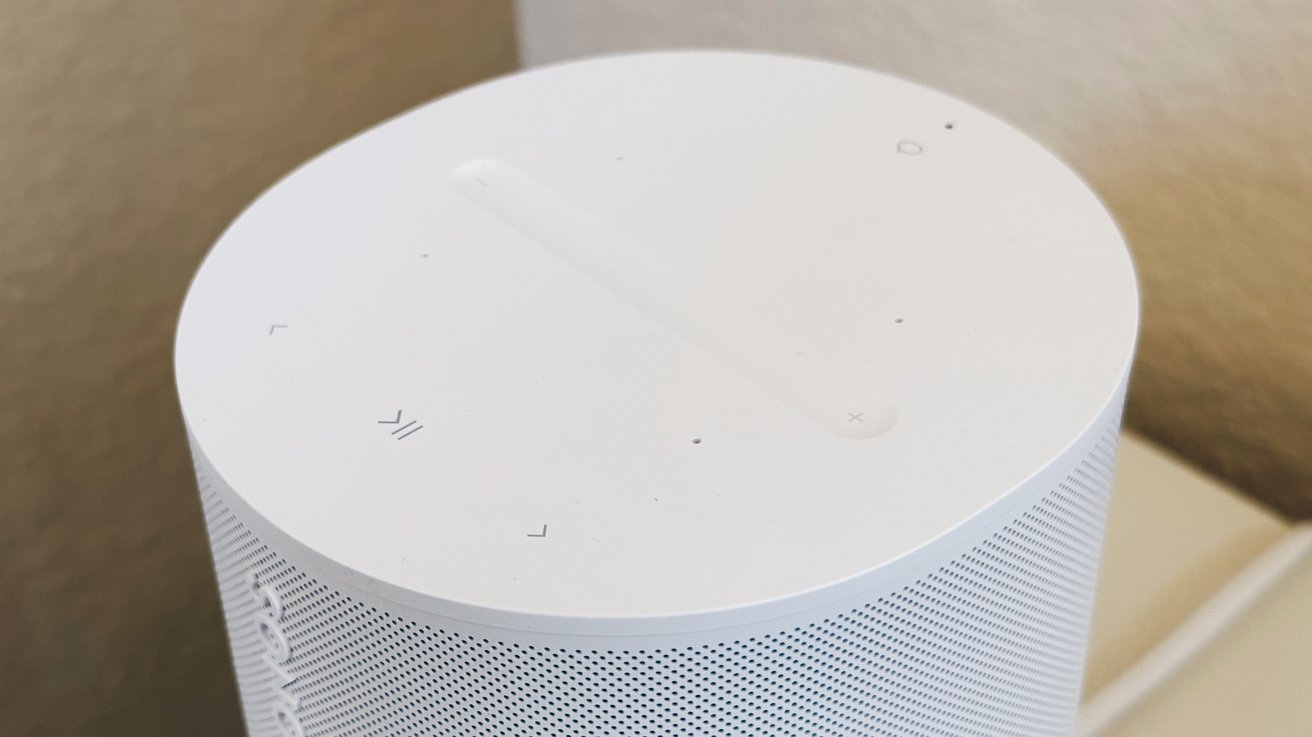
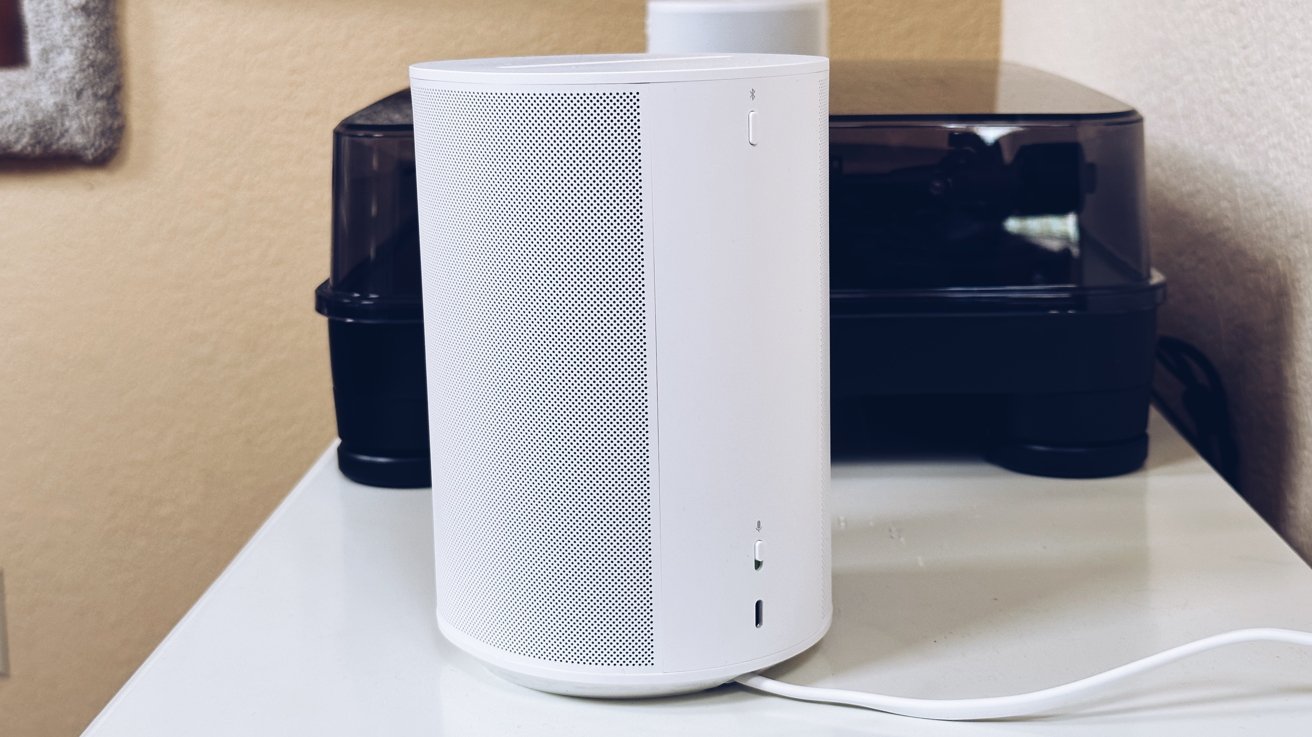
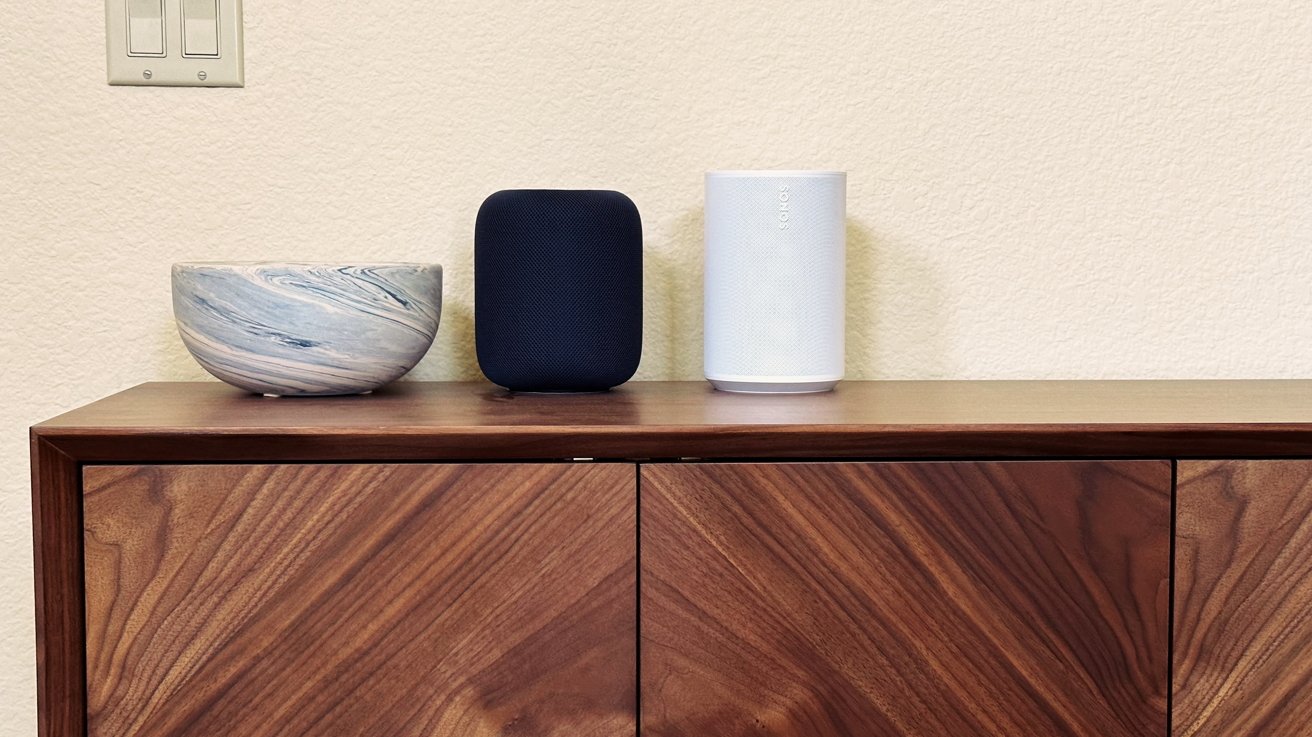
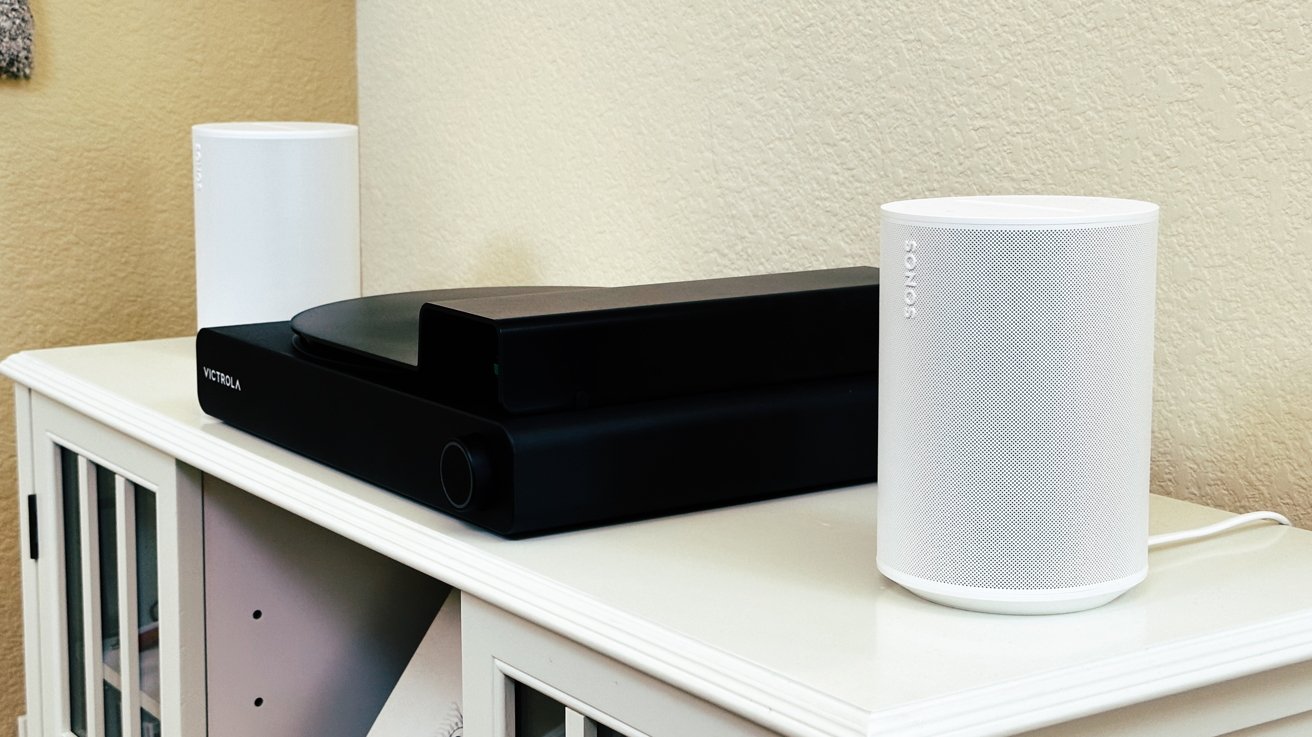







-m.jpg)






 Wesley Hilliard
Wesley Hilliard
 Malcolm Owen
Malcolm Owen
 Andrew Orr
Andrew Orr
 William Gallagher
William Gallagher
 Sponsored Content
Sponsored Content
 Christine McKee
Christine McKee

 Thomas Sibilly
Thomas Sibilly







2 Comments
I bought my first Sonos products last year, a couple of Sonos Roam. I liked that they are AirPlay 2 compatible, wireless and water resistant. I figured we could add them to Home and use them outside on the patio.
I ordered from the Sonos website and they were delivered soon after. I started having issues on the first day. I had set them up as a stereo pair but within 15 or 20 minutes one speaker was no longer playing music. I had to reset that one speaker. After that it worked for about an hour before disconnecting. I unpaired them but still had the same issue, the one speaker would lose its Wi-Fi connection and need to be reset (the reset procedure is a bit of a pain and sometimes the speaker won’t reconnect until the battery has been completely depleted and then recharged).
Less than a week after delivery I was in contact with Sonos support. They were fairly quick to respond an first and got me in touch with Tech Support. I spent weeks going back and forth with Tech Support (in part because their response time started to slow), trying things on my end, changing Wi-Fi settings, resetting the Roam over and over to no avail. They were insistent the issue had to be on my end. I brought up and exchange but was denied as they wanted to continue having me try things. Most times when I tried something “new” the speaker would work properly but temporarily and then it was back to disconnecting as it had been all along.
Anyway, the issue was never resolved, they wouldn’t exchange it and when I was finally exasperated with trying all their fixes and wanted a return I was past the return period and they denied that as well.
That was my first and last Sonos purchase. I won’t make that mistake again.